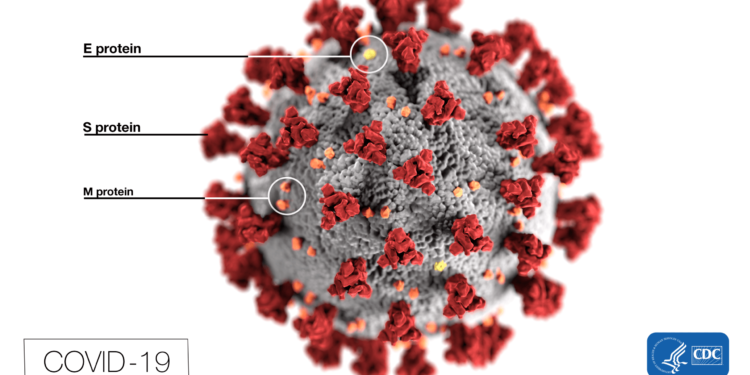NEW YORK — While Wall Street investors took a bath as the world panicked over how a developing epidemic would affect the global economy, health officials shared one common message to help settle concerns:
Wash your hands.
The World Health Organization has reported over 3,000 deaths and nearly 90,000 cases of novel coronavirus worldwide since Monday, March 2. Those figures include the death of a Washington state man who died after contracting COVID-19 while staying at a long-term care facility. The virus’ spread to 59 countries and territories had Dr. Nancy Messonnier, the director of the National Center for Immunization and Respiratory Diseases, referring to the situation last week as a near pandemic.
 The Centers for Disease Control and Prevention scrambled in January to provide tests and information. According to the CDC, 15 cases have been confirmed in the United States. A New York City resident was confirmed over the weekend as the state’s first case. That person reportedly contracted the virus after visiting Iran.
The Centers for Disease Control and Prevention scrambled in January to provide tests and information. According to the CDC, 15 cases have been confirmed in the United States. A New York City resident was confirmed over the weekend as the state’s first case. That person reportedly contracted the virus after visiting Iran.
“To date, our containment strategies have been largely successful,” Messonnier said. “As a result, we have very few cases in the United States and no spread in the community. But as more and more countries experience community spread, successful containment at our borders becomes harder and harder. Ultimately, we expect we will see community spread in this country.
“It’s not so much a question of if this will happen anymore but rather more a question of exactly when this will happen and how many people in this country will have severe illness,” Messonnier said.
Messonnier’s words resonated throughout Washington and New York. President Donald Trump would later appoint Vice President Michael Pence to head the country’s response to the epidemic. However, it did not quell a floundering Dow Jones Industrial Average as Wall Street reacted to fears the virus could cripple the world economy.
The Dow lost more than 3,500 points by last Friday’s close of business, representing a 12 percent loss. Coupled with a 11.5 percent loss in the S&P 500, Wall Street witnessed $3.6 trillion in market value cyphoned from investments, representing the worst week in trading since 2008.
Since efforts to prevent the spread of novel coronavirus to the United States started in earnest in January, the CDC has fielded criticism over its test kits. According to Buzzfeed News, the initial tests were based on three “primer” sets of DNA sequences that match the virus. Labs found that the third primer in the tests gave varying results. Messonnier confirmed that issue last week.
“I am frustrated like I know many of you are that we have had issues with our test,” said Messonnier. “I want to assure you that we are working to modify the kit and hope to send out a new version to state and local jurisdictions soon. There are currently 12 states or localities around the U.S. that can test samples as well as we are testing at CDC 400 samples were tested overnight.”
Local health officials took initiative to inform the public on how to combat against contracting the virus.
No cases of novel coronavirus have been detected locally, according to an Albany County spokesperson. The county reported that one person who had previously exhibited symptoms was later released from quarantine after testing negative to the virus. Eight other households had been under observation after having returned recently from China, but no one showed signs of the virus.
“On Wednesday, Governor Cuomo announced $40 million emergency appropriation to support DOH staffing and equipment as we prepare for future mitigation,” the state Department of Health said in an email statement. “The New York State Department of Health is working closely with its partners at the federal, state and local level on this constantly evolving public health emergency. And while we prepare, it’s important to note there are still no confirmed cases of the novel coronavirus in New York State.”
The danger to local residents is low, said Director of Communications at Albany County Executive’s Office Mary Rozak last week, repeating a statement released earlier by County Health Commissioner Elizabeth F. Whalen.
Though the effort against the virus’ spread has been taken seriously, said Rozak, she reiterated its comparison to the seasonal flu. Since last October, approximately 46,000 people have died worldwide from influenza. In comparison, novel coronavirus has killed less than 10 percent of that figure.
The CDC’s press conference last week invoked documented steps on preventing the spread of influenza as a means to mount a domestic defense against novel coronavirus. Rozak shared a similar strategy last week.
“This is a daily changing situation,” Rozak said. “I don’t think anything is overblown when you tell people to follow best practices.”
Cover your mouth. Wash your hands. Stay home when you’re sick.
Those are the abridged guidelines stated in the Morbidity and Mortality Weekly Report’s “Community Mitigation Guidelines to Prevent Pandemic Influenza — United States.” It was presented in 2017 as a means to mitigate the spread of influenza while no vaccine is available.
“The best way to make sure we’re not spreading anything is to follow these best practices,” Rozak said.



